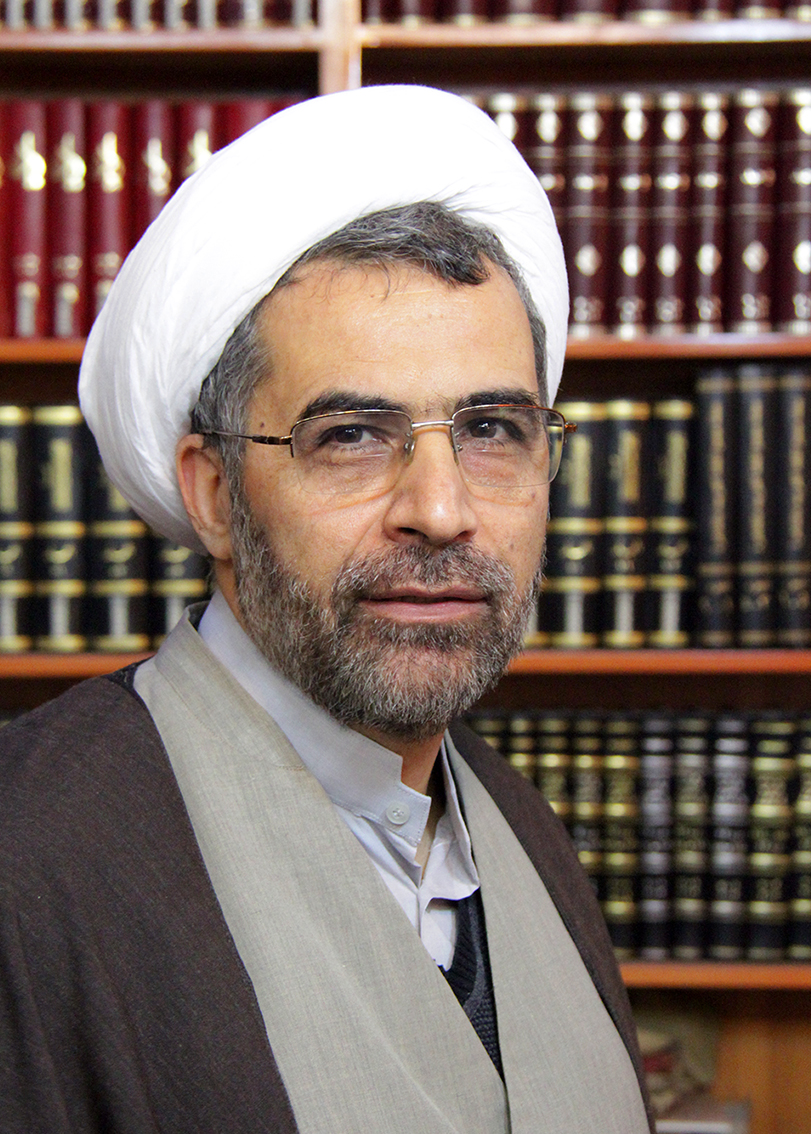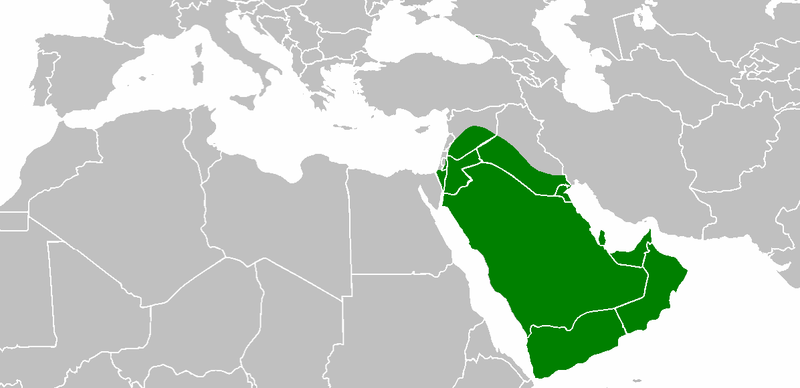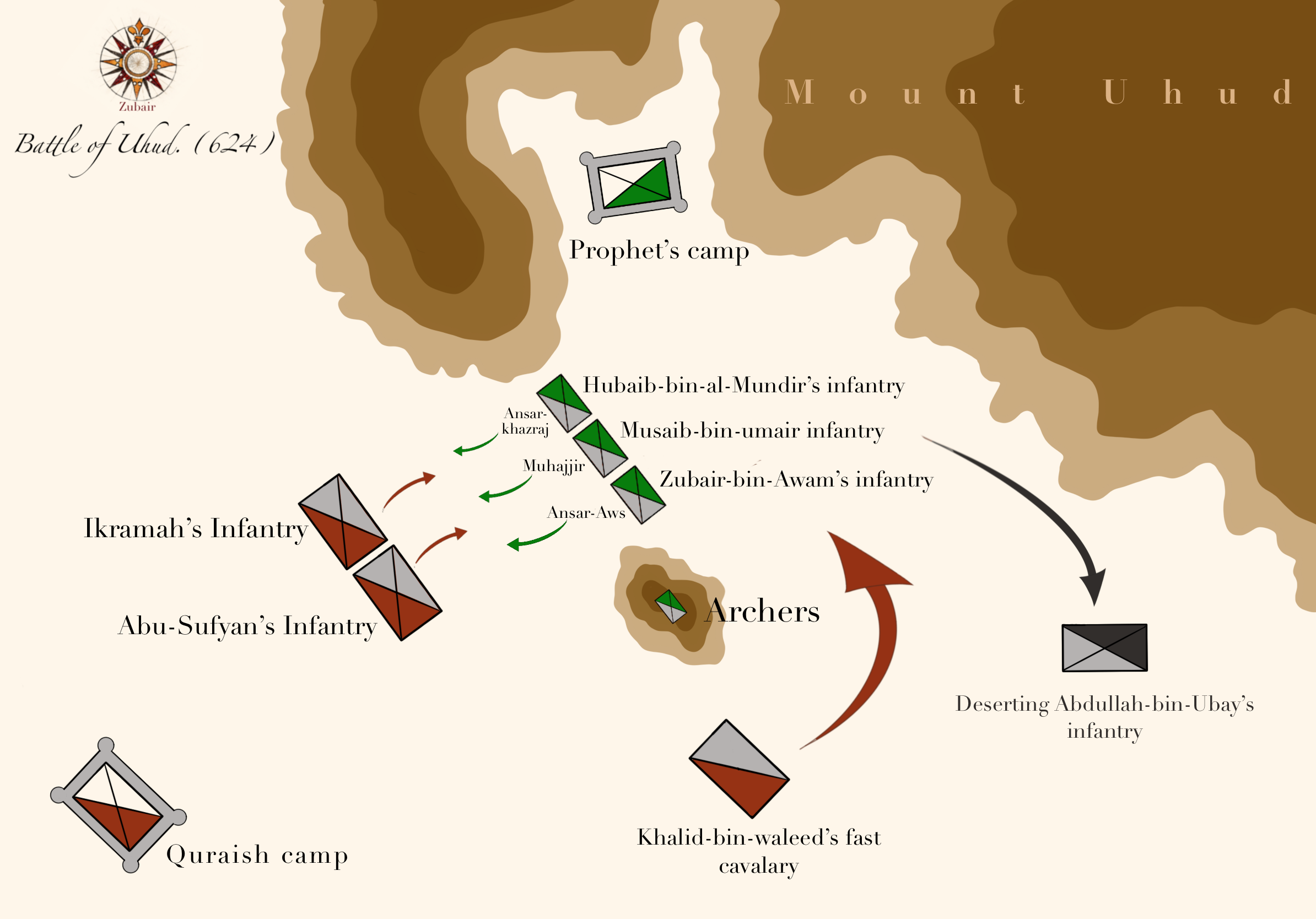|
Political History Of Islam
The ''Political History of Islam'' ( fa, تاریخ سیاسی اسلام) is the name of a two-volume book written by Rasul Jafarian, the first volume of which is entitled "The life conduct of the Prophet (of Islam)" in 692 pages and the second volume is entitled "History of the Caliphs" in 828 pages. The book has been translated into English, Arabic and Urdu. Introduction The author Rasul Jafarian states in a part of the introduction of this collection: Structure In the first volume of this two-volume book, which has been published with an analytical approach, called "The life conduct of the Prophet (of Islam)", examines the political history of Islam from life to the death of Mohammad Ibn Abdullah. But in the second volume called "History of the caliphs from the death of the messenger(s) to the decline of the umayyad", in addition to reviewing events, biography, and the origins of the first caliphs and the history of evolution of the two dynasties of the Umayyad and ... [...More Info...] [...Related Items...] OR: [Wikipedia] [Google] [Baidu] |
Rasul Jafarian
Rasul Jafarian ( fa, رسول جعفریان; born June 30, 1964) is an Iranian clergyman and researcher in field of Iranian history. He is currently the Professor of the Department of History at the University of Tehran, the Director of The specialized library on Islam and Iran, and the Director of the Central Library of the University of Tehran. Rasul Jafarian became a permanent member of the Academy of Sciences of Iran in June 2018 with the vote of the members of the General Assembly of the Academy of Sciences. Life Birth Rasul Jafarian was born on June 30, 1964, in Khvorasgan, Isfahan Province, Iran. Education After completing his primary education in Khvorasgan, he traveled to Isfahan and spent his Middle school education there. During his stay in Isfahan, Jafarian freely attended classes in religious schools. He migrated to Qom in 1978 to continue his seminary education and first attended the classes of ''Khan School'' and then ''Resalat School''. Teaching I ... [...More Info...] [...Related Items...] OR: [Wikipedia] [Google] [Baidu] |
Islam
Islam (; ar, ۘالِإسلَام, , ) is an Abrahamic monotheistic religion centred primarily around the Quran, a religious text considered by Muslims to be the direct word of God (or ''Allah'') as it was revealed to Muhammad, the main and final Islamic prophet.Peters, F. E. 2009. "Allāh." In , edited by J. L. Esposito. Oxford: Oxford University Press. . (See alsoquick reference) " e Muslims' understanding of Allāh is based...on the Qurʿān's public witness. Allāh is Unique, the Creator, Sovereign, and Judge of mankind. It is Allāh who directs the universe through his direct action on nature and who has guided human history through his prophets, Abraham, with whom he made his covenant, Moses/Moosa, Jesus/Eesa, and Muḥammad, through all of whom he founded his chosen communities, the 'Peoples of the Book.'" It is the world's second-largest religion behind Christianity, with its followers ranging between 1-1.8 billion globally, or around a quarter of the world' ... [...More Info...] [...Related Items...] OR: [Wikipedia] [Google] [Baidu] |
Omar
ʿUmar ibn al-Khaṭṭāb ( ar, عمر بن الخطاب, also spelled Omar, ) was the second Rashidun caliph, ruling from August 634 until his assassination in 644. He succeeded Abu Bakr () as the second caliph of the Rashidun Caliphate on 23 August 634. Umar was a senior companion and father-in-law of the Islamic prophet Muhammad. He was also an expert Muslim jurist known for his pious and just nature, which earned him the epithet ''al-Fārūq'' ("the one who distinguishes (between right and wrong)"). Umar initially opposed Muhammad, his distant Qurayshite kinsman and later son-in-law. Following his conversion to Islam in 616, he became the first Muslim to openly pray at the Kaaba. Umar participated in almost all battles and expeditions under Muhammad, who bestowed the title ''al-Fārūq'' ('the Distinguisher') upon Umar, for his judgements. After Muhammad's death in June 632, Umar pledged allegiance to Abu Bakr () as the first caliph and served as the closest adviser t ... [...More Info...] [...Related Items...] OR: [Wikipedia] [Google] [Baidu] |
Caliphate
A caliphate or khilāfah ( ar, خِلَافَة, ) is an institution or public office under the leadership of an Islamic steward with the title of caliph (; ar, خَلِيفَة , ), a person considered a political-religious successor to the Islamic prophet Muhammad and a leader of the entire Muslim world ( ummah). Historically, the caliphates were polities based on Islam which developed into multi-ethnic trans-national empires. During the medieval period, three major caliphates succeeded each other: the Rashidun Caliphate (632–661), the Umayyad Caliphate (661–750), and the Abbasid Caliphate (750–1258). In the fourth major caliphate, the Ottoman Caliphate, the rulers of the Ottoman Empire claimed caliphal authority from 1517. Throughout the history of Islam, a few other Muslim states, almost all hereditary monarchies such as the Mamluk Sultanate (Cairo) and Ayyubid Caliphate, have claimed to be caliphates. The first caliphate, the Rashidun Caliphate, was estab ... [...More Info...] [...Related Items...] OR: [Wikipedia] [Google] [Baidu] |
Abu Bakr
Abu Bakr Abdallah ibn Uthman Abi Quhafa (; – 23 August 634) was the senior companion and was, through his daughter Aisha, a father-in-law of the Islamic prophet Muhammad, as well as the first caliph of Islam. He is known with the honorific title al-Siddiq by Sunni Muslims. Abu Bakr became one of the first converts to Islam and extensively contributed his wealth in support of Muhammad's work. He was among Muhammad's closest companions, accompanying him on his migration to Medina and being present at a number of his military conflicts, such as the battles of Badr and Uhud. Following Muhammad's death in 632, Abu Bakr succeeded the leadership of the Muslim community as the first Rashidun Caliph. During his reign, he overcame a number of uprisings, collectively known as the Ridda Wars, as a result of which he was able to consolidate and expand the rule of the Muslim state over the entire Arabian Peninsula. He also commanded the initial incursions into the neighbouring ... [...More Info...] [...Related Items...] OR: [Wikipedia] [Google] [Baidu] |
Conquest Of Mecca
The Conquest of Mecca ( ar, فتح مكة , translit=Fatḥ Makkah) was the capture of the town of Mecca by Muslims led by the Islamic prophet Muhammad in December 629 or January 630 AD (Julian), 10–20 Ramadan, 8 AH. The conquest marked the end of the wars between the followers of Muhammad and the Quraysh tribe. Dates Ancient sources vary as to the dates of these events. *The date Muhammad set out for Mecca is variously given as 2, 6 or 10 Ramadan 8 AH. *The date Muhammad entered Mecca is variously given as 10, 17/18, 19 or 20 Ramadan 8 AH. The conversion of these dates to the Julian calendar depends on what assumptions are made about the calendar in use in Mecca at the time. For example, 18 Ramadan 8 AH may be converted to 11 December 629 AD, 10 or 11 January 630, or 6 June 630 AD. Background In 628, the Meccan tribe of Quraysh and the Muslim community in Medina signed a 10-year truce called the Treaty of Hudaybiyyah. In 630, this truce was broken when the Banu Bak ... [...More Info...] [...Related Items...] OR: [Wikipedia] [Google] [Baidu] |
Battle Of Khaybar
The Battle of Khaybar ( ar, غَزْوَة خَيْبَر, label=Arabic) was fought in 628 CE between the early Muslims led by Muhammad and Jews living in Khaybar, an oasis located 150 km from Medina in the northwestern Arabian Peninsula (present-day Saudi Arabia), as part of the early Muslim conquests. Jewish tribes reportedly arrived in the Hejaz region in the wake of the Jewish–Roman wars and introduced agriculture, putting them in a culturally, economically and politically dominant position. According to Islamic sources, Muslim troops marched on Khaybar and engaged the Jews, who had barricaded themselves in forts after breaching an agreement with the Muslims. History Islamic sources accuse the Jews of Khaybar of having plotted to unite with other Jewish tribes from Banu Wadi Qurra, Tayma and Fadak as well as with the Ghatafan (an Arab tribe) to mount an attack on Medina. Scottish historian William M. Watt notes the presence in Khaybar of the Banu Nadir, who we ... [...More Info...] [...Related Items...] OR: [Wikipedia] [Google] [Baidu] |
Treaty Of Hudaybiyyah
The Treaty of Hudaybiyyah ( ar, صُلح ٱلْحُدَيْبِيَّة, Ṣulḥ Al-Ḥudaybiyyah) was an event that took place during the time of the Islamic prophet Muhammad. It was a pivotal treaty between Muhammad, representing the state of Medina, and the Qurayshi tribe of Mecca in January 628 (corresponding to Dhu al-Qi'dah, AH 6). It helped to decrease tension between the two cities, affirmed peace for a period of 10 years, and authorised Muhammad's followers to return the following year in a peaceful pilgrimage, later known as The First Pilgrimage. Attempted pilgrimage Muhammad had a premonition that he entered Mecca and did tawaf around the Ka'bah. His companions in Madinah were delighted when he told them about it. They all revered Mecca and the Kaaba and they learned to do tawaf there. In 628, Muhammad and a group of 1,400 Muslims marched peacefully without arms towards Mecca, in an attempt to perform the Umrah (pilgrimage). They were dressed as pilgrims, an ... [...More Info...] [...Related Items...] OR: [Wikipedia] [Google] [Baidu] |
Hejaz
The Hejaz (, also ; ar, ٱلْحِجَاز, al-Ḥijāz, lit=the Barrier, ) is a region in the west of Saudi Arabia. It includes the cities of Mecca, Medina, Jeddah, Tabuk, Yanbu, Taif, and Baljurashi. It is also known as the "Western Province" in Saudi Arabia.Mackey, p. 101. "The Western Province, or the Hejaz .. It is bordered in the west by the Red Sea, in the north by Jordan, in the east by the Najd, and in the south by the 'Asir Region. Its largest city is Jeddah (the second largest city in Saudi Arabia), with Mecca and Medina being the fourth and fifth largest cities respectively in the country. The Hejaz is the most cosmopolitan region in the Arabian Peninsula. The Hejaz is significant for being the location of the Islamic holy cities of Mecca and Medina, the first and second holiest sites in Islam, respectively. As the site of the two holiest sites in Islam, the Hejaz has significance in the Arab and Islamic historical and political landscape. The region o ... [...More Info...] [...Related Items...] OR: [Wikipedia] [Google] [Baidu] |
Banu Qurayza
The Banu Qurayza ( ar, بنو قريظة, he, בני קוריט'ה; alternate spellings include Quraiza, Qurayzah, Quraytha, and the archaic Koreiza) were a Jewish tribe which lived in northern Arabia, at the oasis of Yathrib (now known as Medina). Jewish tribes reportedly arrived in Hijaz in the wake of the Jewish-Roman wars and introduced agriculture, putting them in a culturally, economically and politically dominant position.Peters, ''Muhammad and the Origins of Islam'', p. 192f. However, in the 5th century, the Banu Aws and the Banu Khazraj, two Arab tribes that had arrived from Yemen, gained dominance. When these two tribes became embroiled in conflict with each other, the Jewish tribes, now clients or allies of the Arabs, fought on different sides, the Qurayza siding with the Aws.Watt, "Muhammad", In: The Cambridge History of Islam, Vol. 1A, pp. 39-49 In 622, the Islamic prophet Muhammad arrived at Yathrib from Mecca and reportedly established a pact between the c ... [...More Info...] [...Related Items...] OR: [Wikipedia] [Google] [Baidu] |
Battle Of The Trench
The Battle of the Trench ( ar, غزوة الخندق, Ghazwat al-Khandaq), also known as the Battle of Khandaq ( ar, معركة الخندق, Ma’rakah al-Khandaq) and the Battle of the Confederates ( ar, غزوة الاحزاب, Ghazwat al-Ahzab), took place in the year 627; it was a 27-day-long defense by Muslims of Yathrib (now Medina) from Arab and Jewish tribes. The strength of the confederate armies is estimated at around 10,000 men with six hundred horses and some camels, while the Medinan defenders numbered 3,000. The largely outnumbered defenders of Medina, mainly Muslims led by the Islamic prophet Muhammad, dug a trench on the suggestion of Salman the Persian, which, together with Medina's natural fortifications, rendered the confederacy's cavalry (consisting of horses and camels) useless, locking the two sides in a stalemate. Hoping to make several attacks at once, the confederates persuaded the Muslim-allied Medinan Jews, Banu Qurayza, to attack the city from ... [...More Info...] [...Related Items...] OR: [Wikipedia] [Google] [Baidu] |
Battle Of Uhud
The Battle of Uhud ( ar, غَزْوَة أُحُد, ) was fought on Saturday, 23 March 625 AD (7 Shawwal, 3 AH), in the valley north of Mount Uhud.Watt (1974) p. 136. The Qurayshi Meccans, led by Abu Sufyan ibn Harb, commanded an army of 3,000 men toward Muhammad's stronghold in Medina. The battle was the only battle throughout the Muslim–Quraysh War in which the Muslims did not manage to defeat their enemy and it came just a year after the Battle of Badr. Abu Sufyan became the ''de facto'' leader of the Quraish after the death of Amr ibn Hishām at Badr nine months prior. Wanting to avenge the Meccan's losses at the Battle of Badr, he marched upon Medina from Makkah on 10 December 624 AD with a force three times stronger than that of the Meccans at Badr. Another reason for the battle was to protect the trade route of Abu Sufyan's caravans. The Battle of Uhud was the second military encounter between the Meccans and the Muslims and the first one in which the Muslims were on th ... [...More Info...] [...Related Items...] OR: [Wikipedia] [Google] [Baidu] |

.jpg)


.jpg)
.jpg)
